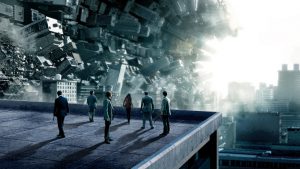
Question: In the movie clips, I saw that you broke apart the Knowles Building very creatively using frames. When incorporating existing architecture in film, how do you maintain the integrity of architecture and make sure that it remains one of the main points of the film? How do you ensure that it still leaves an impact on people’s minds, other than the plot and the dialogues?
Reply: The story of 惑SECTION was a narrated conclusion to the experience of studying architecture at HKU for 5 years. In the very beginning, it is the script writers’ intention to include all locations where all architecture students had , which naturally included studios within Knowles Building and the HKU campus in general, and also the weekly commute to the former shop of Yan-ngai at Water Street. The memory of these spaces were reconstructed as dreamscape via the film. While the story itself is fictional, the space captured through the lens recorded many moments and places where fond memories of being a HKU architecture students shared.
These moments and spaces were significant visual cues that drive different sequences in the film. Whether these spaces physically connected to each other is relatively irrelevant when one enjoyed the narrative of the film. To include these spaces are the modus operation of re-writing space to a visual narrative.
For instance: the exterior of Knowles Building which used to be painted in dark reddish color was the most iconic perspective of the building, and it became the dream collapse scene during the training session. Starbucks used to have outdoor seating next to the Library Plaza and this is where MArch studio used to be located at 2/F and the old movable partitions were used for pin-up and presentation, this was where tracing papers emerged from the dream training session; the back of house area in repro was where all students ended up during the final projects’ rush hour, the computer there which was used for reviewing the final photoshop output file to plotter is the concluding limbo scene in the film.
By: Anahita Garg
UID: 3035557856